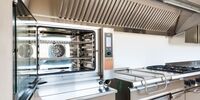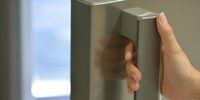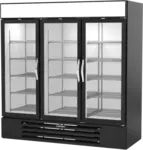Everyone likes to savor a glass of red or white wine with friends or family at pubs or bars. But there are times when you are left with an unfinished bottle of wine. This issue is quite prevalent in commercial bars, restaurants, and other commercial establishments. So, understanding the process of storing wine to keep it fresh for use or reuse is important for the success of your bar or restaurant business.
In this article for wine connoisseurs, we discuss what is a wine cooler, how to store wine, red wine temperature storage, how to store red wine after opening, ideal wine temperature, white wine storage temperature, a comparison between a wine cooler and a mini-fridge, and wine cooler vs. refrigerators.
What is a Wine Cooler?
Wine coolers or wine refrigerators are defined as temperature-controlled devices that are essential for storing wine. Wine coolers can maintain ideal wine storage temperature over a prolonged period. These coolers can also be used to showcase wine bottles and help with merchandising.
Wine Fridge Temperature
The perfect wine temperature is 55 degrees Fahrenheit for storing wine. A wine fridge that consistently delivers 55 degrees Fahrenheit can ensure the graceful aging of wine.
Does Wine Freeze?
Yes, wine can quickly freeze after a certain temperature. Wine is sealed in bottles to prevent oxidation. When wine gets frozen, it gets oxidized, and oxidized wine can break the seal of the bottle. This reaction can push the cork out of the bottle or break the bottle completely.
What Temperature Does Wine Freeze?
The freezing of wine depends upon the amount of alcohol that is in it. Wines that have higher amounts of alcohol have a lower freezing point. The average freezing temperature of the wine is 22.5 degrees Fahrenheit. The exact temperature may also vary depending upon the type of non-alcoholic ingredients and compounds.
How to Store Wine?
Here are a few essential steps for storing wine:
Proper temperature: Temperature is one of the most critical factors that determine the taste of a wine. Anything over 65 degrees and less than 45 degrees Fahrenheit can accelerate the aging process and damage the wine.
Store Bottles Horizontally: Store wine bottles horizontally to keep the cork moist at all times. Dried-out corks can lead to seepage and premature aging of the wine.
Check Humidity Levels: The ideal humidity levels for storing wine ranges between 60 to 68 percent. Low humidity levels can dry out the corks and make the wine vulnerable to oxidation.
Prevent Vibration: Vibration can disturb the complex compounds present in a bottle of wine and prevent the aging of wine.
Sunlight or Bright Light: Light or UV rays can alter the flavor of the wine and cause damage to the natural aging process.
How to Store Wine After Opening?
After opening a bottle of wine, try to keep the open bottle away from light or direct sunlight. Also, you can store the re-corked or resealed bottle at room temperatures or store it in a wine cooler. You can also pour the contents of the bottle into a half-bottle to limit the oxidation process.
Red Wine Temperature Storage
Red wine is generally stored at room temperatures. The perfect red wine storage temperature is 55 degrees Fahrenheit. Red wines are ideally stored in a temperature setting of 45 to 65 degrees Fahrenheit. The exact temperature depends upon the type of red wine that you are going to store. A wine from the vineyards of France can have a different ideal temperature than a wine from Australia. So, anything above 70 degrees can flatten the wine and make it stale.
How To Store Red Wine After Opening?
Prolonged exposure to oxygen can alter the taste of red wine. Reducing the amount of oxygen can prolong the shelf life of red wines. There are a few methods by which you can retain the taste of red wine over a period:
Recorking the bottle: Recorking the bottle of red wine after every pour is essential. It restricts the exposure to oxygen and keeps the bottle of red wine fresh for reuse.
Refrigerate Red Wine: Refrigerating red wine helps in slowing down oxidation that helps in keeping the wine fresh.
Position: While storing recorked bottles of red wine, try to keep the bottle in an upright position. It limits the exposure to excess air.
Exposure to Light: Try to keep the bottle of red wine tucked away from direct sunlight to preserve the wine for a prolonged period.
White Wine Storage Temperature
The storage and serving temperature of white wine might vary. But white wine tastes better when it is stored at lower temperatures. The ideal white wine storage temperature is in the range of 55 to 65 degrees Fahrenheit. Also, it is important to keep the temperature consistent throughout the storage process as rapid fluctuations in temperature can expand or contract the wine. It can eventually push out corks and crack the bottle in extreme cases.
How To Store White Wine After Opening
White wine oxidizes faster than a bottle of red wine, as it does not contain high tannins to stop the oxidation process. Because of this reason, it is essential to recork a bottle of white wine and store it in the refrigerator immediately. There are a few steps that you can follow to store a bottle of white wine after opening:
Re-corking: Recorking or resealing a bottle of white wine can help you save the bottle for future usage. You can use the existing cork or a fresh cork to seal the bottle.
Refrigeration: Once you have recorked the bottle, you should store the bottle of white wine back in the wine cooler.
Transfer: You can also try pouring left-out white wine into a half-bottle for better preservation. Pouring the wine into a half-bottle restricts the exposure to oxygen.
Temperature: The ideal temperature range for storing recorked white wine is 45 to 55 degrees Fahrenheit.
Wine Cooler vs. Mini-Fridge
Wine coolers are perfect for storing wines for a prolonged period. Wine coolers assist in storing and the aging of wine. Mini-fridges are designed for storing everyday food products, and they are too cold to store wine.
Here are some key differences between wine cooler vs. mini-fridge:
Position of wine bottles: Wine bottles need to be stored in a manner where the wine is resting on the side of the bottle. This process ensures that the bottle's cork remains moist so that there’s no seepage of air inside the bottle. Mini-fridges have limited space to store wine bottles appropriately; you can only store a limited number of bottles in a mini-fridge. It is also difficult to store wine bottles in a marginally upright position due to the space obligations in a mini-fridge.
Temperature: With wine coolers, you can set the temperature range between 45 to 65 degrees Fahrenheit. The temperature range of mini-fridges varies between 35 to 42 degrees Fahrenheit, which is not ideal for storing wine.
Wine Cooler vs. Refrigerator
Wine coolers are designed specifically to store wine at higher temperatures than a standard refrigerator. While refrigerators are perfect for storing all kinds of foods. There are some fundamental differences between the two:
Temperature: Wine coolers are designed to operate at constant temperatures. Any change in the temperature can alter the taste of the wine. Most wine coolers maintain an ideal temperature of 55 degrees Fahrenheit, hile refrigerators are prone to temperature fluctuations as refrigerators are opened frequently. These fluctuations can have detrimental effects on the quality of the wine.
Humidity: Humidity can affect the aging of wine. Any variation in humidity levels can result in unwanted reactions in the wine. Wine coolers provide a relative humidity level of 60-70% that provides an ideal humidity level for the aging of wine.
Vibration: Refrigerators tend to vibrate while cooling, and vibrations can disturb the integrity and flavor of the wine. Wine coolers come equipped with a compressed cooling system that produces fewer vibrations than regular refrigerators.
Digital Thermostat: Most wine coolers come with digital thermostats and LED temperature display panels for better temperature control.




















